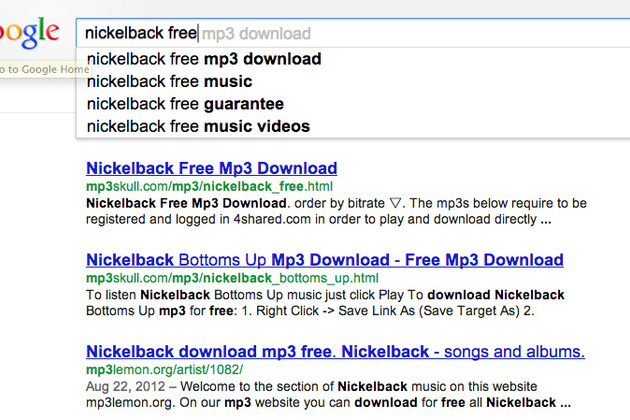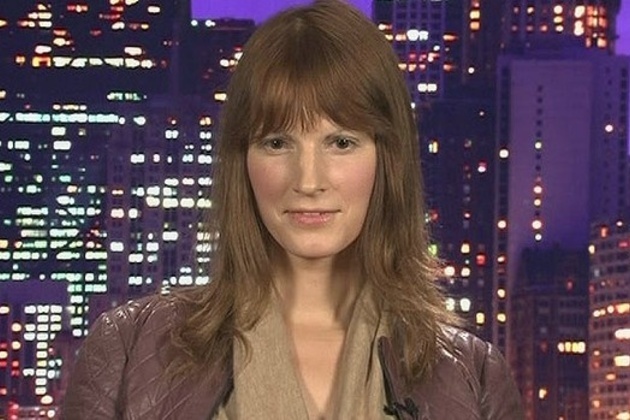![]()
When you think of people who urge humanity to go to the stars, you tend to think of cheery liberal icons like Carl Sagan or Neil deGrasse Tyson. But Newt Gingrich had to get his starry-eyed and much-ridiculed ideas about space exploration from someone, and it certainly wasn't any of those guys.
Enter Robert Zubrin, the right-wing bulldog for space travel. Trained as a nuclear engineer, he's spent more than 20 years pushing for the colonization of Mars through books like 1996's The Case for Mars; advocacy through the Mars Society, which he founded and leads; and relationships with people like Newt Gingrich, whom he advised on space policy in the 1990s. He's not a hardcore Republican ideologue by any means, but he regularly rails against environmentalists for being "anti-growth", writes for the National Review, and proudly wears his American nationalism.
Zubrin, who just published a new e-book called Mars Direct: Space Exploration, the Red Planet, and the Human Future, spoke to me by telephone from his home in Colorado about why to go to Mars, how we might get there, and why it will be important to defend private property and entrepreneurship on the fourth planet from the sun.
Motherboard: When you read the news, do you ever see problems facing humanity and think, "Y'know, if we would just go to Mars, this problem would be solved"?
I would say the biggest threat that our society faces is the bureaucratization of society. Society tying itself up in knots with rules that prevent initiative and, ultimately, liberty. The frontier created this incredibly vigorous society in America. People could come here and do whatever worked. They went to a place where the rules hadn't been written yet. And when you had the challenge of the frontier, it both challenged people to innovate and left them free to innovate.
Now you've got people running around who are launching lawsuits to prevent people from developing crops that have higher yields using genetic engineering. Well, on Mars, you're gonna have very limited greenhouse space, and human labor is gonna be a premium. If you can develop crops that have five times the yield of present crops, you're not gonna tolerate a lawsuit by some twit who is warning of the danger if your tomatoes escape. The frontier is a liberating force.
![]()
Illustration by Paul DiMare.
So it's not just about Mars, and it's not just about the future. It's about how people see the future now. If you think that the future is closed, that there is only so much to go around, then every new person born is a minus to everyone else: every foreign nation and race is ultimately an enemy to every other race, because we're all competing for a finite pie. It's a "bad thing," for example, that the sons and daughters of Chinese peasants are going to college, because now they'll become engineers and get jobs and cars and start using up oil that "we" want, and therefore, it's a bad thing; and America should be allowed to remain "prosperous" so that we can use up all these resources that "they" should want. This is a formula for despair. It's a formula for conflict. And it's a formula that has a very bad ending.
On the other hand, if you say that resources are things that are created by human initiative, by human creativity, then the more people there are and the higher their standard of living and the more freedom they have, the better it is for you.
So, ultimately, these two concepts, which are very much at war in our society, are implicit in all kinds of political discourse. How people view the future will govern what happens on Earth today.
![]()
Illustration by Robert McCall.
We had no idea how we would go to the moon in 1961! We just knew, 'We're Americans, we just beat the Nazis, we can deal with anything.' Now, they're all gonna say, 'Can you guarantee 100% that it's going to be safe?'
So wait, you're saying we need to go to Mars not because we're actually facing a resource crisis and need to expand, but because people think there's a resource crisis on Earth?
Precisely. Ideas have consequences! [Nazi] Germany didn't need living space. Germany today has a bigger population than it did under the Third Reich, substantially smaller territory, and they live much better. They never needed to try to invade Eastern Europe and the Soviet Union and kill the Jews and the Slavs and the Greeks and the Serbs. It was all in their heads. All in their heads because they had this idea that Germany needed living space and that other races were competing with them for living space. It was completely mythical. But myths can create wars. Myths can create genocides. So this is about the battle of ideas.
Do you think President Obama has been bad news for space travel?
I don't know how much of this reaches Obama's level. I would say that John Holdren, his science advisor, is really bad news. But in any case, look: we have the great success of Curiosity landing on Mars! The President and top administration figures get up and celebrate, "This is a great achievement for American ingenuity" and so forth. And what do they do? They propose following it up by cutting the Mars exploration budget from $550 million a year to $180 million a year! I mean, they take a bow and then cut the program by a factor of three! And then, this is defended by-- the NASA administrator goes to Congress and says, "Well, the reason why we're cutting the Mars program is that it's been successful."
On a lighter note, did you grow up thinking a lot about Mars and space?
Yes. I was five when Sputnik flew, and while, to the adult world, it may have been a terrifying event, to me, it was utterly exhilarating, because it meant that the science fiction stories I'd been reading -- I was already reading at age five -- were real. We were going into space! All this stuff was gonna happen. And then, as a kid, growing up, Kennedy made his speech committing us to go to the moon, and I was 17 when we landed on the moon. During the '60s, we were going to the moon by 1970, Mars by 1980, Saturn by 1990, Alpha Centauri by the year 2000. We were movin' out, and I wanted to be a part of that!
And then the Nixon administration did the same thing that Obama just did, [but] with Apollo. In other words, they welcomed the Apollo astronauts back from the moon, gave them a ticker-tape parade, and in the meantime, gutted the program. They wrecked it completely.
What sci-fi were you reading? Bradbury?
I certainly read Ray Bradbury's The Martian Chronicles, but more typical of the science fiction I was reading at that time were [Robert A.] Heinlein and [Arthur C.] Clarke. The hard science fiction writers.
So, like, Stranger in a Strange Land? That kind of Heinlein stuff about Mars?
Well, Stranger in a Strange Land was a little bit different. But, like, Red Planet, Have Spacesuit, Will Travel, Citizen of the Galaxy -- those were my favorite Heinlein works.
![]() Red Planet is such an underrated novel.
Red Planet is such an underrated novel.
Well, yeah. Heinlein is very interesting. He's sort of a libertarian, but I think Heinlein's most important works are his juvenile books, like Red Planet and Have Spacesuit, Will Travel and Farmer in the Sky and so forth. They all have the following features: they have this kid who knows some science, he's self-reliant, and he is somehow thrown out into space in a predicament, and he uses his self-reliance and his slide-rule and his knowledge of woodcraft -- in the Boy Scouts sense of the word, being able to handle yourself out in the woods -- he uses it to take it on.
It was an expression of a kind of boldness -- the same kind of boldness the nation showed with Apollo. When Kennedy said, "I'm committing the nation to go to the moon," we had no idea how we would go to the moon in 1961! We just knew, "We're Americans, we can take on anything. We just beat the Nazis, we can deal with anything. We can do it."
Now, they're all gonna say, "Well, how can you know it'll be safe when we go to Mars? Can you guarantee 100% that it's going to be safe?" Well, if you wanna be safe, you don't go to Mars, alright? [Laughs] It's this paralysis.
![]()
Zubrin holds out a fossil found during a Mars mission simulation conducted on Devon Island in the Canadian Arctic in 2001. Image via Mars Society.
If you can develop crops that have five times the yield of present crops, you're not gonna tolerate a lawsuit by some twit who is warning of the danger if your tomatoes escape. The frontier is a liberating force
You've said finding some kind of life on Mars would be like finding the Rosetta Stone. What do you mean by that?
I think it would tell us that the relevant world is much, much bigger than we currently think of it. I mean, look: here we are, it's been almost 500 years since Copernicus; and yet, most people, while they academically agree that Earth is a planet that goes around the sun and there are other planets, probably even other planets going around other stars, and so forth; that's not how they actually think about it, internally.
The way they think about it, most humans still have a geocentric view. They say, "This is the world, and that stuff above us is called the sky, and that's how it is." That's why people can make absurd statements like, "What's so important about space?" That's like somebody in a tiny village somewhere saying, "What's so important about the entire rest of the Earth?"
You've met with Newt Gingrich in the past and talked to him about Mars. What did you think about the debacle that happened when he started talking about space exploration during last year's Republican primaries?
With Gingrich, there was a core in there that was really good, which was this idea of creating a Mars prize and basically letting loose private entrepreneurs and teams to go chase this prize. They could raise money, they could do it, it would really ignite the fires of creativity and the taxpayers wouldn't pay a nickel unless the goal was cheap. I think that was good.
![]()
Newt Gingrich, the would-be president of Mars. Image via Getty
There was some other stuff that he mixed up in it -- the moon base and so forth -- that confused the issue and allowed Romney to portray him as somebody who wanted to go spend $400 billion building moon bases. That was in addition to the fact that he was just enormously outgunned by Romney, who ran all kinds of negative ads on all sorts of things and just bombed him in Florida. That allowed Newt to be defeated there. He wasn't gonna win in Florida against those odds.
You seem to have a very skeptical view about stagnation and bureaucracy in the US government's space program. Is it time to get rid of government and depend on private organizations like SpaceX for Mars travel?
I'm not ready to go there yet. I still remember a time when the government, when NASA, did do great things. It still does do great things. I mean, look at Curiosity on Mars.
There's a number of different models to identify. First of all, if we did have a NASA-led program, NASA could simply say, "Here it is, these are the four major pieces of spaceflight hardware that we need in order to do the human Mars mission. Let's put them up for bids and fixed-price contracts." And then you'll have SpaceX making some very aggressive bids that will force Lockheed and Boeing and so forth, more established contractors, to really deal with their overheads. Right now, with cost-plus contracting, the overhead is the way they get paid!
![]()
The Curiosity rover. Image via NASA / Flickr.
So, if you created this thing, if you just had NASA say, "Here's the mission plan, we need these four things, let's put them up with fixed-price contracts and start bidding," you would discover that you'd be able to do a human Mars program not for hundreds of billions of dollars, but for tens of billions of dollars.
Now, if you wanted to even do it more aggressively than that, in terms of private participation, you could put the whole mission up for a bid. You could say, "The mission is a round-trip to Mars. What's your bid for the whole deal?" You might get a bid from SpaceX on the order of $10 billion.
Finally, you could do it with a prize, like Newt wanted to do. You say, "Okay, the government will offer a prize of $10 billion to the first private entity to send people to Mars and back." And $10 billion is nothing to the government, but in the real world, it's a lot of money, and people might go for it. And if they didn't, you wouldn't lose money. Not a penny would be spent.
You've compared the colonization of Mars to the European colonization of the New World. Why is that something to aspire to? Wouldn't we have wars of conquest between nations who are trying to colonize Mars?
If countries are gonna go to war, they're not gonna go to war for Mars. But frankly, if there's gonna be war, I can't think of a better place to do it than outer space.
What do you mean?
A lot less collateral damage. I mean, wars on Earth kill a lot of civilians. [Laughs] That's the thing. In 1967, these people in the Johnson administration -- like Dean, Rusk, McNamara, Rostow, Bundy -- they dreamed up this outer-space treaty to prevent claims of national sovereignty in outer space, supposedly in order to prevent conflict in outer space. So there's this treaty to prevent national sovereignty in outer space.
But there's a real irony here, because what they really did it for, was to prevent the prolongation of the space race beyond Apollo, which was draining funds from what they really wanted to do, which was the Vietnam War! Now, I ask you, which is a more benign activity: competing with the Soviets for firsts in space, or fighting in the jungles of Vietnam?
![]()
Curiosity mission control, NASA Ames. Image via NASA / Flickr.
So, you want to get rid of the no-sovereignty-in-space policy?
I think there need to be reasonable laws for claims of sovereignty on Mars. In other words, I don't think you can have one power go there and say, "Well, we landed here first, so we can claim the whole thing." I think there ought to be possibility to claim certain territories based on your activity in those territories. Without that, without there being some national sovereignties, there can't be private property.
Private property can only exist in the presence of government. You own your house because there are police there to make sure that you do. If there were no police, anybody stronger than you could throw you out of your house. In order for us to establish mining claims on Mars, there has to be someone with whom they are registered. So, I do think there needs to be national sovereignty in space, but I think that agreements need to be reached on criteria for establishing national claims on Mars territories.
![]()
A Chinese space landing. Image via Xinhua.
Frankly, if there's gonna be war, I can't think of a better place to do it than outer space
Why are you so certain that Americans are the ones who can and need to settle Mars? I mean, China has a pretty robust space program.
Well, if we keep going on the trajectory we're on, the first people on Mars will be Chinese. I don't think that's a good thing. Not because I'm anti-Chinese. I'm not anti-Chinese. I like Chinese people. I've been to China. I think they're very charming, and I'm not just saying that out of political correctness -- I actually think that.
But they have a government which is a tyranny, and they have political and social traditions that lend themselves to tyranny, and I think that, as humanity moves out into space, the traditions of a society which values the individual and values human freedom should be representing humanity as it grows from its planet of origin into the universe beyond.
I don't want this humanistic culture that we have in the West to just be a boutique item that only exists in one corner of the human universe. I want it to put its stamp on the future of mankind.
It sounds like you're saying America should go to Mars so we can take American and Western European culture into space.
Look at it this way: my last name is Zubrin. That's a Russian name. My folks came [to America] from Eastern Europe and I'm really glad they did, since practically all those that stayed behind were either killed by the Nazis or by Stalin or some other godforsaken tyranny. The reason there was a place like this that they could come to is because North America was settled by England, which represented, for all its laws, the most humanistic culture in the world at the time.
If North America had been settled by the Turks, instead, it wouldn't have looked like this. If it had been settled by the Spanish, it wouldn't have looked like this. We're having this conversation in English because the Elizabethans went forth from their little island and the English-speaking version of Western civilization became a world culture, carrying with it all the values of Magna Carta and Shakespeare and the King James Bible and a lot of other very good things. It brought a sense of trial by jury and a lot of other things that didn't exist elsewhere in Europe, to say nothing of Eastern civilizations.
![]()
The New World. Image via Library of Congress.
So, it's a very fortunate thing that that happened and that North America became settled by that culture and then became this place that people from every country in the world could come and enjoy the opportunities that that kind of culture can afford. If they hadn't have done that, English, if it had survived, would be this curiosity in this little island on the edge of Europe. England would be kind of like Serbia -- not really relevant to how the world is run and sort of a curiosity. That's why we need to go forth. We need to go forth because what we have is worth spreading.
Watch "Spaced Out," Motherboard's video series on space obsessives, and follow us @motherboard and on Facebook.
Connections







 Red Planet is such an underrated novel.
Red Planet is such an underrated novel.






































